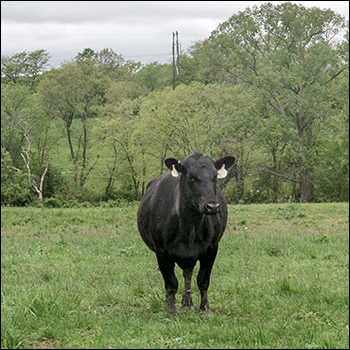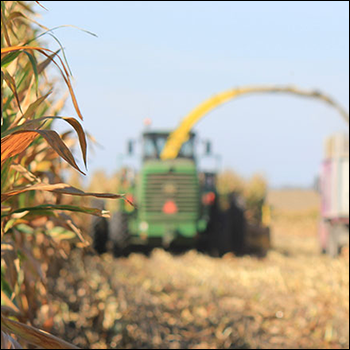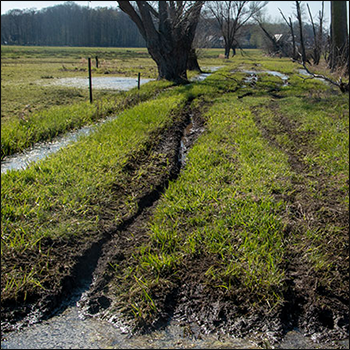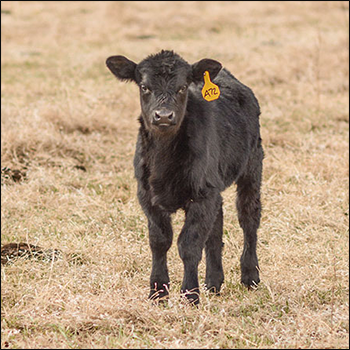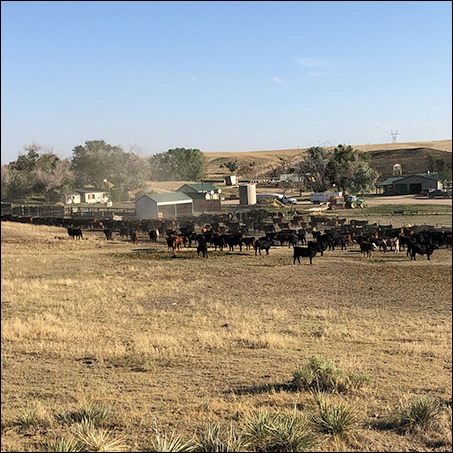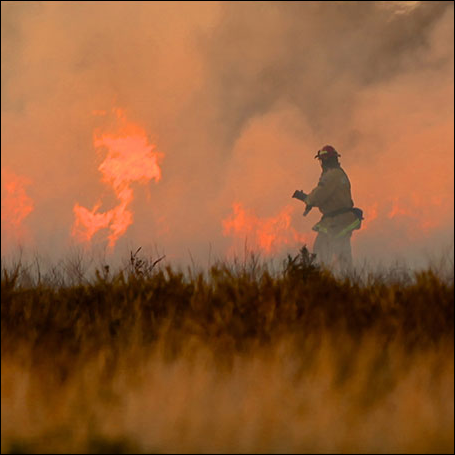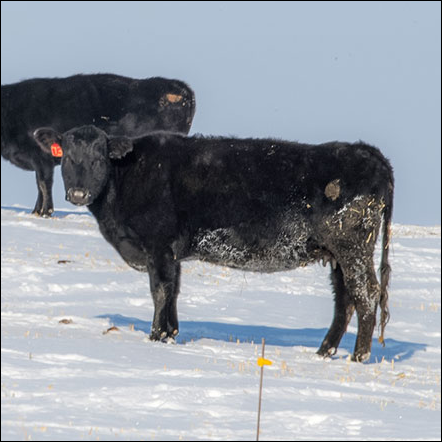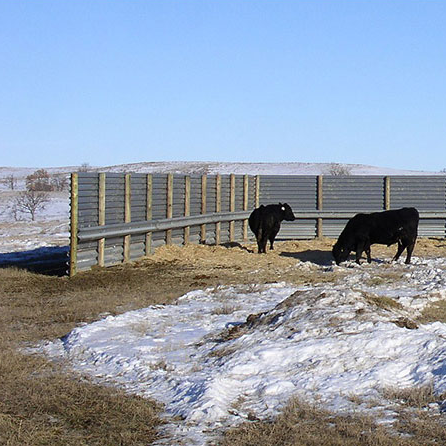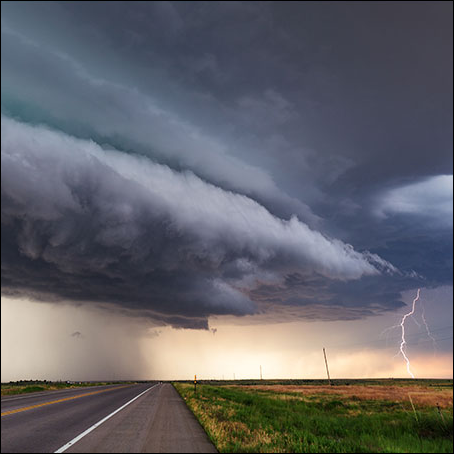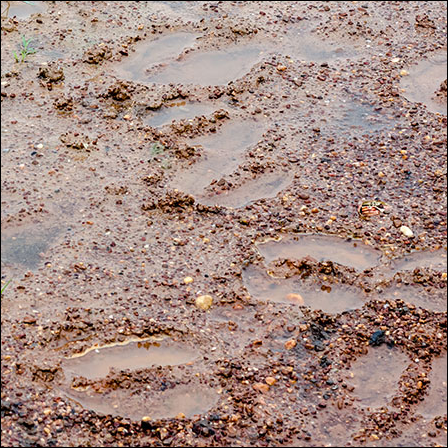Above: Even if spring rains develop, the rangeland resources for 2021 are already starting with a deficit because of the limited moisture in summer and fall 2020, says Roy Roath. “The leaf material at the end of a growing season determines how much energy will be available for next year’s growing season.” [Photos by Tonya Amen]
Are You Prepared for Drought?
Three ranching advisors share strategies to consider as drought sets in.
The D-word — drought — is taking hold across the Western United States, and ranch advisors are encouraging livestock operators to prepare to make strategic decisions to protect their rangeland resources and economic bottom lines.
As of Feb. 2, 2021, the U.S. Drought Monitor (see Fig. 1) showed the middle of the United States from Minnesota and the Dakotas through Nebraska, Kansas, Texas and westward from abnormally dry to severe and exceptional drought, particularly in the Southwestern states.
In Colorado, Roy Roath is seeing many ranches “in a heap of trouble” as a result of the compounding effect of dry conditions last summer and a minimal hay crop. That has resulted in cows dropping body condition through the winter. With minimal moisture, Roath says, there’s “no feed to go to” as spring approaches.
Roath is a professor emeritus of rangeland management from Colorado State University and currently provides ranch consulting services.
Fig. 1: U.S. Drought Monitor, Feb. 2, 2021 |
In Idaho, Jim Gerrish, a grazing lands consultant and former University of Missouri forage research faculty member, reports that 2020 resulted in less than 3 inches (in.) of precipitation during the growing season — making it the driest summer he’s experienced since moving to the state 17 years ago. Winter has also brought a lack of snow on the mountains.
“Everyone here is very aware of [drought],” Gerrish says. “Everyone is looking for snow.”
In Wyoming and Montana, Dallas Mount says drought conditions are a varied mix, but the former Wyoming Extension educator and current CEO of Ranch Management Consultants (RMC), which hosts Ranching for Profit Schools, is also concerned about the looming drought’s effect on ranchers for 2021 and beyond.
Mount repeats a phrase of the late Bud Williams: “The three things a rancher needs to balance are the inventories of grass, money and livestock.”
He adds, “You can’t go broke with too much money in the bank and grass in front of you. But too many producers tell themselves a story that overemphasizes their inventory of livestock.”
This trio is concerned about all three inventories (forage resources, livestock and financial) and urges producers to start planning now for drought.
Cattle affected
As a result of the lack of feed, Roath says many of the cattle he’s seen have been in body condition scores (BCS) of 3 and 4 (on a 9-point scale), which is thinner than normal and will likely affect breed-back rates.
 |
“In the Northern Great Plains, cows don’t gain weight in the winter time, and body condition and reproductive rates are linearly related. So, I expect we’ll see a decline [in breed-back], especially among 2- and 3-year-old cows,” he says.
Roath advises: “Be cognizant of what’s going on with your herd structure to ensure those that need extra feed resources are getting it.”
However, if feed is not available, he adds, “Don’t keep young stock and yearling heifers in this drought environment right now.”
Additionally, Roath encourages producers to review genetic selection choices. He points out that every 10 pounds (lb.) of milk production requires about a 10% increase in feed requirements.
“That’s a lot. You can drive total feed requirements up,” he says. “Many producers have more genetics than they have feed to use, but the savvy producers are looking for lighter birth weights and lighter milk to modify mature cow weights.”
Roath emphasizes the importance of “cows that fit the environment,” and adds, “The performance of livestock and the performance of the available plant community are both hinged together by economics.”
Lack of grass
Roath wants producers to understand that even if spring rains develop, the rangeland resources for 2021 are already starting with a deficit because of the limited moisture in summer and fall 2020.
“The leaf material at the end of a growing season determines how much energy will be available for next year’s growing season,” he explains.
Specifically, the absence of leaves on range plants in August, September and October results in 30% less leaf primordia — the group of cells that will form new leaves — for plant growth in the spring.
“Cool-season plants produce new leaves in the fall — at the base of the plant, you can see green,” he continues. “However, many ranches have liquidated that group of leaves because they’ve already been grazed off or they’ve freeze-dried due to lack of cover (similar to winterkill of winter wheat without snow cover).”
Roath adds that while many will argue it doesn’t matter because the plants are dormant, he counters that it does.
“You are managing the house the plants live in,” he explains. “When there’s no standing crop — it’s been used.”
Roath continues: “That’s not good news. Even if it rains this spring, ranchers are going to be short of feed.”
Additionally, he points out that the percent of moisture that is received this spring will determine what proportion of the plant will grow. So, if the lack of moisture continues, plant growth will be even more limited beyond the 30% reduction already anticipated.
Thus, “waiting to see if it rains” is not an effective drought strategy, Roath emphasizes. “The table is already set. There are not enough grass resources to go into spring.”
5 steps to take
1. Develop a drought plan now. “Historically, you should always have a drought plan,” Gerrish emphasizes. “Without it, it is hard to know what to do.”
Mount agrees, “Have key decision dates identified and written down with actionable items tied to [them].”
As an example, he suggests tracking precipitation and having target destocking decisions based on precipitation received by April 1, May 1, etc.
“Hard decisions are tough,” Roath notes, “but decision-making in a crisis mode rarely produces the best decisions.”
- 2. Evaluate stocking rates. Roath’s advice to producers who recognize that the drought is affecting their range, livestock and economics is this: “Make important stocking rate decisions earlier than later.”
By doing so, he adds, “Your recovery will be earlier.”
From the perspective of the range, he advocates for ranch operators to maintain residue.
“It is important to use the range appropriately,” he explains. “Let it regrow, so next fall you are not in the same situation as now.”
He adds: “If you carry grass forward, you’ll be more drought-proof than if you don’t. That’s true everywhere, no matter if your average rainfall is 20 inches or 12. Ranchers have got to manage the residual plant cover better on rangelands.”
He cautions that without destocking, the repercussions could be “a multiyear effect on cow performance and range resources.”
Gerrish concurs.
“Producers who have a good inventory of feed can carry the stock,” he says. Although, if the feed/forage inventory is not readily available, he advises, “cut your stock numbers. Do not buy feed, because range conditions could be worse come spring.”
He adds, “Since last fall, I’ve been saying, ‘Cull deeper than what you normally do.’ With high feed prices and low cow prices, it is hard to justify keeping those cows around.”
He and Roath acknowledge cow prices are not ideal. However, notes Roath, “if you wait until June, that market is crashed.”
- 3. Utilize controlled grazing. As the 2021 grazing season begins, Gerrish advises: “Controlled grazing can pay its way. Manage more intensively than normal because that can make forages go further.”
- 4. “Monitor, monitor, monitor,” says Gerrish, once forages start growing. “If feed resources are not on track, pull the trigger early [to destock].”
5. Tap available drought resources. Experienced extension specialists, ranch consultants, courses like the Ranching for Profit schools, and several online resources can all provide helpful information toward developing a drought management strategy. This trio encourages producers to reach out for help when needed to weather the impending drought.
“Plan, monitor and then act,” Gerrish concludes. “Those are the three key pieces to drought management.”
Editor’s note: Kindra Gordon is a freelance writer and cattlewoman from Whitewood, S.D.

